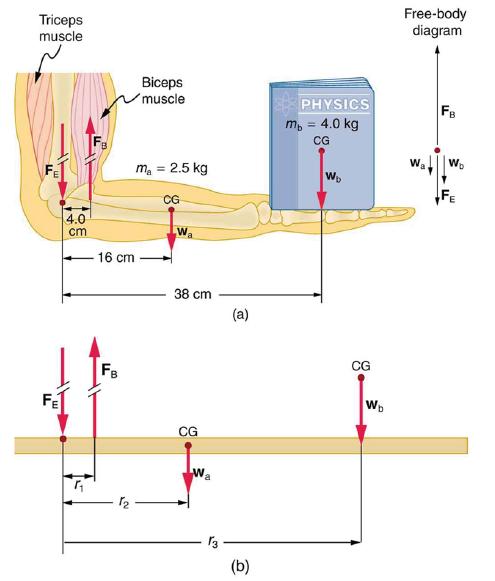Suppose we replace the 4.0-kg book in Exercise 9.31 of the biceps muscle with an elastic exercise
Question:
Suppose we replace the 4.0-kg book in Exercise 9.31 of the biceps muscle with an elastic exercise rope that obeys Hooke's Law. Assume its force constant k = 600 N/m.
(a) How much is the rope stretched (past equilibrium) to provide the same force FB as in this example? Assume the rope is held in the hand at the same location as the book.
(b) What force is on the biceps muscle if the exercise rope is pulled straight up so that the forearm makes an angle of 25° with the horizontal? Assume the biceps muscle is still perpendicular to the forearm.
Data given in Exercise 9.31
We analyzed the biceps muscle example with the angle between forearm and upper arm set at 90°. Using the same numbers as in Example 9.4, find the force exerted by the biceps muscle when the angle is 120° and the forearm is in a downward position.
Data given in Example 9.4
Calculate the force the biceps muscle must exert to hold the forearm and its load as shown in Figure 9.25, and compare this force with the weight of the forearm plus its load. You may take the data in the figure to be accurate to three significant figures.
Strategy
There are four forces acting on the forearm and its load (the system of interest). The magnitude of the force of the biceps is FB; that of the elbow joint is FE; that of the weights of the forearm is wa, and its load is wb. Two of these are unknown (FB and FE), so that the first condition for equilibrium cannot by itself yield FB. But if we use the second condition and choose the pivot to be at the elbow, then the torque due to FE is zero, and the only unknown becomes FB.
Step by Step Answer:






